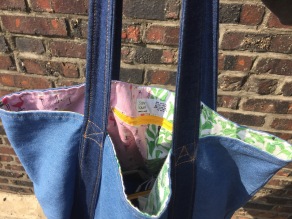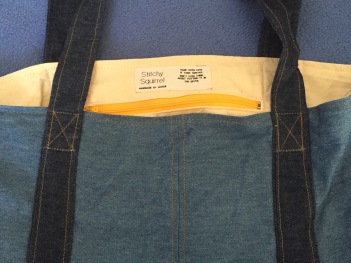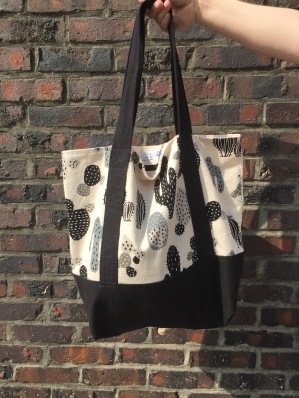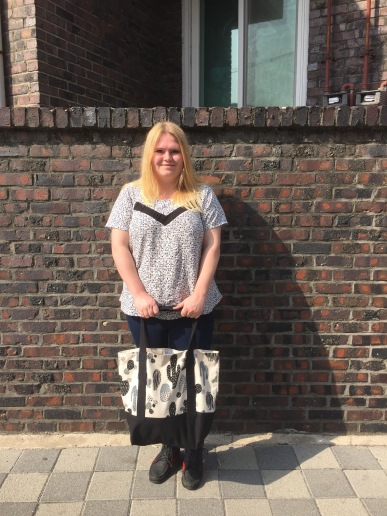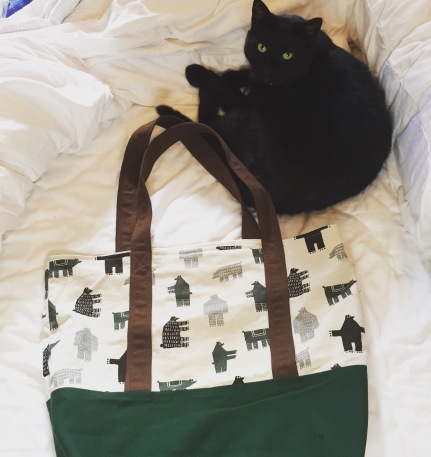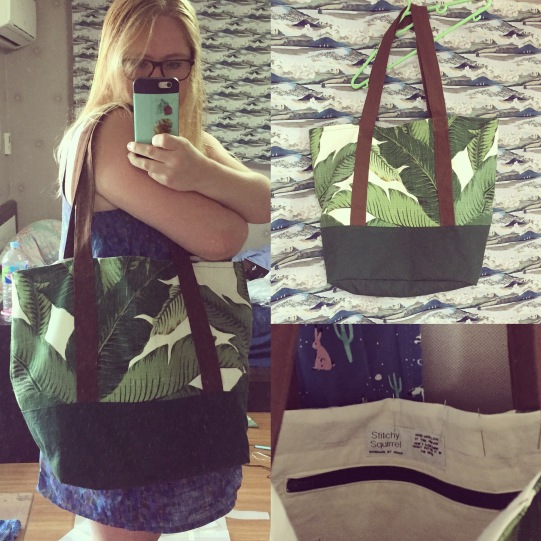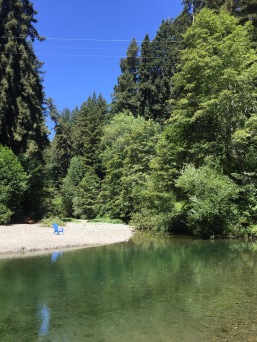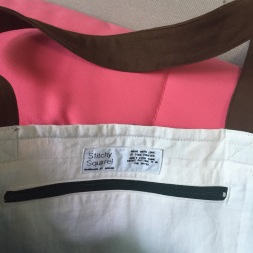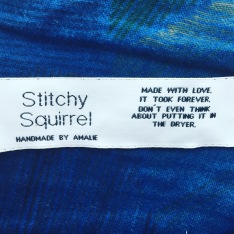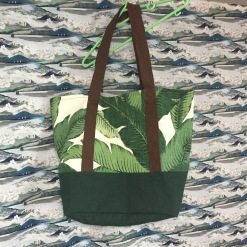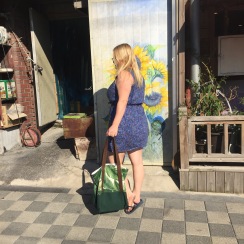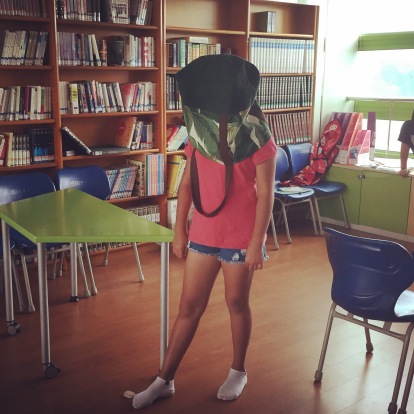I feel like tote bags are becoming my signature item. A month or so ago I made four of them, and then two days ago I finished another two. I’d started those last two before Christmas, and then left them in Australia. Now I’ve left Korea and I’m back home, so I could finally get them finished.
I absolutely love these tote bags, they’re so practical and sturdy, and leave a lot of room to play with prints. They also make great gifts. Of the eight tote bags I’ve made in total, only two of them were for me.
I won’t say too much about the construction, because I’ve already blogged about the first two I made (the leafy ones), and they’re pretty much exactly the same, except that the denim and cactus ones have slightly different dimensions. For those, they’re an inch narrower, and the base is an inch (half an inch?) shorter. The straps are also an inch shorter, because I’m a bit short and they were coming too close to dragging on the ground. I did the corners 3″ in along the bottom seams.
The two denim ones are for some male friends of mine. I used dark denim for the base and straps, and a lighter denim for the main body. Both bags have classic caramel-coloured top stitching. All the fabric for these is from Dongdaemun Market in Seoul.
Friend A is a great artist, and I made his in exchange for a drawing. He picked out the fabrics, including the lining, which I really love. The panel piece had six squares of different tropical prints– leaves, flowers, pineapples, flamingoes. For the internal pocket, I used a yellow zipper. I usually do Xs on the straps at the top of the body, for extra strength, but on one of them I did an A for his name. A little personalized detail which makes me smile. The total effect is perfect– the bag is fairly simple and masculine on the outside, and fun and flamboyant on the inside. Just like my friend! He’s really happy with it, and takes it everywhere– huge success.
Friend B’s bag is a bit simpler, with plain unbleached canvas for the lining. It also has a yellow zipper for a little splash of color. There’s a seam down the centre of one of the main body pieces, because I didn’t have enough fabric to do it in one piece. I thought it added a bit of interest, and emphasized it with top stitching.
When Friend A said he wanted denim on denim for his bag, it made me think of Friend B, who was infamous in uni for rocking the “Canadian Tuxedo” look. I like making these bags in pairs, so it was pretty perfect to just make another with the same main fabrics. He doesn’t know he’s getting it yet (the chances of him reading this blog are very, very low)– I hope he likes it!
The next two I made using black 9 oz. duck canvas from fabric.com for the straps and base, and cactus print canvas from Miss Matatabi (sold out) for the main body. I made one for a close Korean friend who was so helpful to Me while I lived there, and one for myself. They’re identical except that mine has a join on the back piece of one of the straps, because I was low on fabric. It’s not noticeable at all because it’s on the part that’s stitched down along the body. Plain unbleached canvas for the lining, and black for the zippers. My friend seemed happy with hers, and I’m very happy with mine– before, I constantly used my leafy tote, but now this is my go-to bag. The leafy tote was designed for my parents (Dad has completely taken over their one and uses it a lot!), this one feels more “me”.
The last two totes used 7 oz. hunter green duck canvas from fabric.com for the base, 9 oz. brown duck canvas for the straps, and “Robobear” printed canvas from Miss Matatabi (sold out) for the main body. Miss Matatabi really is my favourite source for printed canvas. The lining is also unbleached canvas from the market in Seoul. These two are for my parents, to take to our family holiday house–named Bear Camp– in the California redwood forest. These were meant to be Christmas presents, but better late than never!


